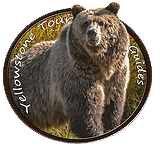Planning Your Trip to the Famous Old Faithful Geyser
Of all the incredible Yellowstone National Park attractions, there is none more famous than the Old Faithful geyser.
Old Faithful has been featured in all kinds of pop culture, and has been reliably spouting since its discovery. It was the very first of the nearly 500 Yellowstone geysers to receive a name, during the 1870 Washburn-Langford-Doane Expedition (which eventually led to the establishment of Yellowstone National Park in 1872).
Just about everyone can agree that Old Faithful is an absolute must-see attraction during your Yellowstone visit, no matter how many people you might have to contend with.
A world-famous landmark
Old Faithful gets its name from the reliability with which it erupts. Eruptions occur at approximately 90-minute intervals, so it’s easy for you to plan your visit to ensure you see an eruption.
It is important to be patient—there are times where it might erupt a few minutes later than expected. However, when it happens, the eruption is large and long, giving you plenty of time to get some great photographs.
Keep in mind that the world-famous nature of the landmark means it will always be busy, without any exceptions. No matter what time you come, expect to have a lot of other people around you hoping to get a good look at the geyser in action. Its fame, combined with its scheduled eruptions, means there will always be people concentrated in the viewing area in the time leading up to the eruption.
There are benches in the viewing area, and if you want to get one of the best spots, you should plan to arrive at least 20 or 30 minutes ahead of the next scheduled eruption. Of course, you can always stand elsewhere in the viewing area and still get a great look at the eruption when it occurs. You will be able to see it from a distance just fine.
If you only wish to stay for the geyser eruption, you might wind up only spending half an hour at the site. However, if you wish to explore the Upper Geyser Basin area, you should set aside two or three hours for a visit, as there are other sites worth seeing in the area. There are plenty of amenities in the area for you to enjoy as you wait for the eruptions, including a visitor center with bathrooms, a gas station, shops and restaurants.
You have probably seen a video of the eruption at some point, but trust us—there’s nothing like seeing it live. There’s a reason why it’s one of the best-known geysers in the world, and the most-visited by far in Yellowstone National Park. It’s large and satisfying, and a great “touristy” attraction to add to your trip that the entire family will enjoy.
Looking for more specifics about what to expect at the Old Faithful geyser site, or for more tips about how you can get the most out of your Yellowstone excursion? Contact Yellowstone Tour Guides today and we will be happy to provide you with all the info you need about Yellowstone National Park attractions.
